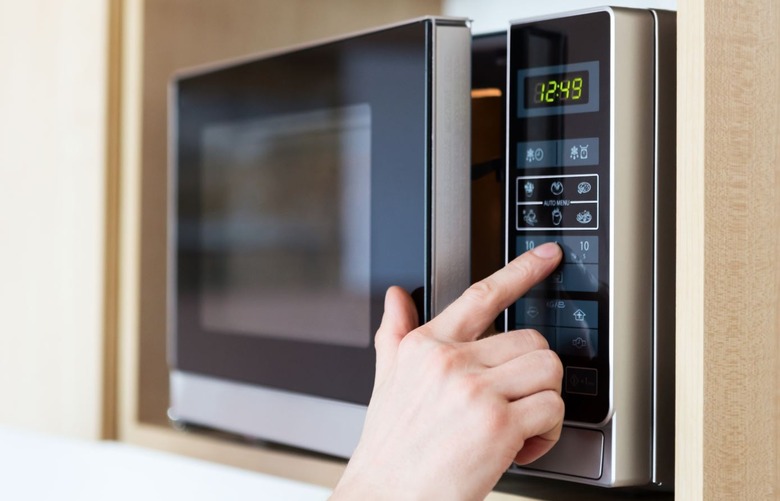Here's What Really Happens When You Put Metal In A Microwave
It's something that's been drilled into our heads from a young age (or at least it should have been): Never, ever put metal in a microwave. We've all accidentally left a twist-tie or some aluminum foil in there accidentally, however, and the resulting show is pretty bizarre: bright, arcing flame, a horrible buzzing and popping noise, and flying sparks, freaky enough to make you go running to shut it off and occasionally damaging enough to ruin your microwave. But what's exactly going on in there?
The exact reason is actually pretty complicated, but we'll try to put it into layman's terms. First of all, microwaves operate by blasting whatever's inside it with high-frequency radio waves that cause water, sugar, and fat to vibrate at a high speed, creating friction that heats up the food.
When these radio waves encounter something that isn't water, sugar, or fat, they can act in some odd ways. If they hit a ceramic bowl, for example, they won't do much of anything. If they hit a flat sheet of metal, they'll bounce right off of it (this is why microwaves are lined with flat sheets of metal). But if they hit metal that isn't perfectly smooth, like crumpled foil or a the handle on a Chinese takeout container, the electrons in the metal will begin to jump around instead of just reflecting the waves, thanks to a magnetic field created at the metal's corners and edges.
It's also worth noting that not all metal will spark in the microwave; even a very flat sheet of foil will be fine, because there are no big edges and corners for a charge to build up on. In fact, even Hot Pockets and frozen pizzas have metallic bases and sleeves for microwave heating, in order to brown the food. Spoons also take much better to microwaves than forks do.
That said, we still suggest that you don't fool around with any metal in the microwave.
